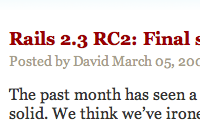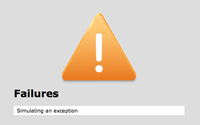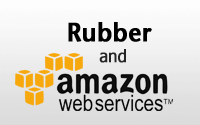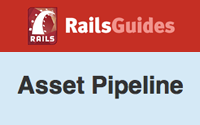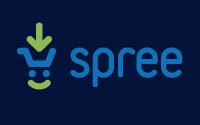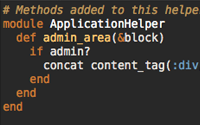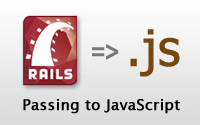Types
- Free Episodes
- Pro Episodes
- Revised Episodes
Categories
- Active Record
- Active Resource
- Active Support
- Administration
- Ajax
- APIs
- Authentication
- Authorization
- Background Jobs
- Caching
- Code Walkthrough
- Controllers
- Debugging
- Deployment
- eCommerce
- Forms
- Mailing
- Models
- Performance
- Plugins
- Production
- Rack
- Rails 2.0
- Rails 2.1
- Rails 2.2
- Rails 2.3
- Rails 3.0
- Rails 3.1
- Rails 3.2
- Rails 4.0
- Refactoring
- Routing
- Search
- Security
- Testing
- Tools
- Views
Rails 2.3 Extras
This episode finishes up this series on Rails 2.3. Here you will learn about several smaller additions in 2.3.
(9 minutes)
Mountable Engines
Engines are receiving a major update in Rails 3.1. You can mount them at any path, embed assets, run generators and more. See how in this episode.
(13 minutes)
Rubber and Amazon EC2
Deploying to Amazon EC2 allows you to scale an application quickly. Learn how to use Rubber to deploy to the cloud with just a few commands and monitor the cluster with various web tools.
(17 minutes)
Facebook Authentication
This will show how to create a new facebook application and configure it. Then add some authentication with the omniauth-facebook gem and top it off with a client-side authentication using the JavaScript SDK.
(12 minutes)
Spork
Spork improves the loading time of your test suite by starting up your Rails application once in the background. Use it with Guard for the ultimate combo in fast feedback while doing TDD.
(9 minutes)
Understanding the Asset Pipeline
The asset pipeline is probably the biggest feature in Rails 3.1, but it can seem like magic at first. Here I dive into exactly how the asset pipeline works.
(11 minutes)
Getting Started with Spree
Spree allows you to quickly turn a Rails project into a full eCommerce application. Here I show how to set it up and configure the look and feel of the store.
(10 minutes)
Rails 2.2 Extras
This episode finishes up the Rails 2.2 series by showing a few miscellaneous additions that I find useful.
(4 minutes)
Guest User Record
Instead of presenting a sign up form to the user, consider creating a temporary guest record so the user can try out the application without filling in their information up front. They can then become a permanent member afterwards.
(9 minutes)
Passing Data to JavaScript
There are a variety of ways to pass variables from a Rails application to JavaScript. Here I show three techniques: a script tag, a data attribute, and the Gon gem.
(6 minutes)

